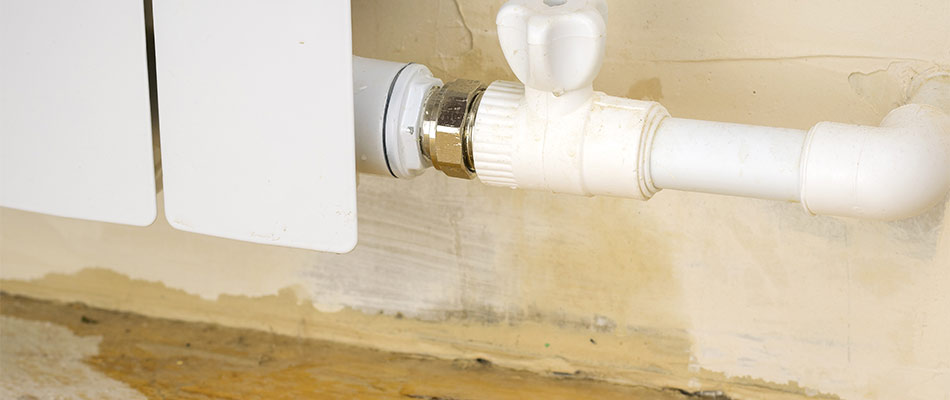Find Out Effective Ways to Spot Hidden Leaking Water Lines
Find Out Effective Ways to Spot Hidden Leaking Water Lines
Blog Article
How do you actually feel with regards to Detecting hidden plumbing leaks?

Early discovery of leaking water lines can mitigate a prospective calamity. Some tiny water leaks might not be noticeable.
1. Examine the Water Meter
Every home has a water meter. Inspecting it is a guaranteed manner in which aids you uncover leakages. For beginners, turn off all the water sources. Guarantee nobody will certainly purge, make use of the faucet, shower, run the washing machine or dishwasher. From there, go to the meter as well as watch if it will alter. Given that no person is utilizing it, there should be no movements. That indicates a fast-moving leak if it moves. Also, if you discover no changes, wait an hour or more as well as inspect back again. This implies you may have a slow leakage that can also be below ground.
2. Inspect Water Consumption
Assess your water bills and also track your water intake. As the one paying it, you need to observe if there are any type of discrepancies. If you spot sudden changes, regardless of your intake being the same, it means that you have leaks in your plumbing system. Bear in mind, your water expense ought to fall under the very same variety monthly. A sudden spike in your costs suggests a fast-moving leakage.
Meanwhile, a consistent boost every month, despite having the same behaviors, shows you have a sluggish leak that's additionally slowly rising. Call a plumber to thoroughly inspect your residential or commercial property, specifically if you really feel a warm area on your flooring with piping underneath.
3. Do a Food Coloring Examination
When it concerns water intake, 30% comes from bathrooms. Examination to see if they are running correctly. Decline specks of food color in the storage tank and wait 10 mins. If the color in some way infiltrates your dish during that time without flushing, there's a leakage between the storage tank and bowl.
4. Asses Exterior Lines
Don't neglect to check your exterior water lines too. Test spigots by affixing a yard tube. Must water seep out of the connection, you have a loosened rubber gasket. Replace this and also ensure all connections are limited. If you've got an automatic sprinkler, it will help get it skillfully took a look at and also maintained every year. One little leak can squander tons of water and also increase your water costs.
5. Analyze the scenario and also inspect
Homeowners ought to make it a practice to inspect under the sink counters as well as even inside cupboards for any type of bad odor or mold growth. These two red flags indicate a leakage so prompt focus is called for. Doing regular examinations, also bi-annually, can save you from a major trouble.
If you understand your home is currently old, maintain a watchful eye on your heaters, tubes, pipes etc. Check for stainings as well as compromising as most pipelines as well as appliances have a life span. They will certainly also normally degrade due to tear as well as wear. Do not wait for it to intensify if you suspect dripping water lines in your plumbing system. Call a professional plumber today so you don't end up with a dreadful mess in your home.
Early discovery of leaking water lines can alleviate a prospective calamity. Some small water leakages may not be visible. Examining it is a surefire method that helps you find leakages. One tiny leakage can waste lots of water and also spike your water expense.
If you suspect leaking water lines in your plumbing system, do not wait for it to escalate.
5 SMART WAYS TO FIND HIDDEN WATER LEAKS WITHOUT DESTROYING YOUR HOUSE
Monitor Your Water Meter
If you start to notice a higher water bill but you know that your water usage hasn’t increased, it’s a good sign that there’s a leak. Keep a close eye on your water meter to see if you detect any huge fluctuations.
While you’re outside, make sure that there is no water source accidentally left turned on such as a garden hose. Turn all water off including inside water before you check the meter.
Next, take a closer look at the leak indicator and look for any movement. It depends on the type meter you have but for many, it’s a triangular-shaped dial. It may also look like a small silver wheel that spins when water flows through it.
If either of these types of dials is turning after you’ve turned the water off, you likely have a leak. Another option is to take a reading and then wait an hour or two.
Take a second water meter reading to see if anything has changed. This is how to detect water leaks for most of your home. Just make sure you haven’t used any water during that hour to a two-hour window.
Check Your Faucets
For many homeowners, the source of a water leak stems from the faucets. A worn rubber washer is often the culprit and can be found underneath the handle.
You can easily replace the washer if you have the correct tools. You will need to turn the water off under the sink, or at the main cutoff valve.
Next, remove the faucet handles to access the gasket. Most home improvement or hardware stores sell replacement gaskets and the tools you need to fix this simple, common problem.
How to Detect Water Leaks from Your Toilet
The toilet is another common culprit for water leaks, and it can often go unnoticed. A leaky toilet can waste several hundred gallons of water, which also means it can waste quite a bit of money.
Remove your tank lid and add a few drops of food coloring to the tank. Dye tabs are another easy alternative that can be purchased at many hardware stores.
Let the coloring saturate the water and wait approximately 30 minutes without flushing. If any color has come through the tank and into the toilet bowl, you likely have a leak.
Luckily, these types of leaks can often be resolved by replacing the flapper. The flapper has likely just worn out over time or become cracked which causes water to constantly flow from the tank into the bowl without you even noticing.
Another toilet-related red flag? If you need to jiggle the handle to keep your toilet from running, you likely have an issue with the flush bar and chain sticking.
You can fix this by adjusting the nut that secures this mechanism inside the tank. Or, you might need to replace the handle since it could be sticking.
Be Aware of Underground Water Leaks
Outdoor water leaks can get quite expensive to repair, so it’s important to know what to look for. If an area of your yard seems softer than others or you notice dark spots, this could be cause for concern.
If one particular area around your home seems to stay wet even after a dry spell, this is a red flag. You can also look closely near your driveway and street and see if you notice any unusual water flow.
Water flow doesn’t have to be a constant stream of flowing water. Even puddles that seem out of place may indicate that there’s a deep, underground leak.
If you suspect that you have an underground leak, call your local water or utility company as soon as possible. They have the tools and the know-how to further diagnose and fix the issue.

I was made aware of that report on Hacks to detect leaks through a good friend on a different domain. Sharing is good. Helping others is fun. Thank-you for going through it.
Efficient, reliable plumbing services here. Report this page